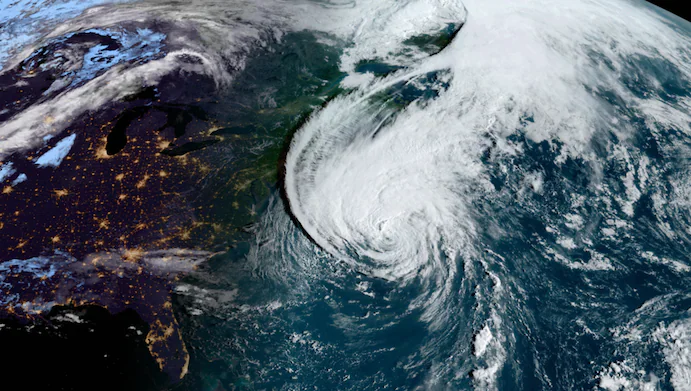In the last decade, hurricanes have increased in intensity and destructiveness, posing a challenge to our understanding and readiness for these natural disasters. Traditionally, hurricanes have been categorized into five groups based on their wind speeds, but recent events have exceeded the limits of this classification system. Some scientists now advocate for the introduction of a new category—Category 6—to accurately depict these increasingly potent storms.
What characteristics would a Category 6 hurricane possess? How has climate change impacted the strength of these storms? And what steps can we take to brace for this new reality? Join us as we delve into the changing landscape of hurricanes, the science behind their intensification, and the potential necessity for a new storm classification. The revelations may surprise you, shedding light on the urgent need to reassess our approach to these formidable forces of nature.
Understanding the Saffir-Simpson Hurricane Wind Scale
The Saffir-Simpson Hurricane Wind Scale is a critical tool for gauging the potential impact of hurricanes. This ranking system categorizes hurricanes according to their maximum sustained wind speeds, ranging from Category 1 to Category 5.
– Category 1: Wind speeds between 119-153 kilometers (74-95 miles) per hour, resulting in minor property damage and some power outages.
– Category 2: Wind speeds between 154-177 kilometers (96-110 miles) per hour, leading to significant property damage and a notable risk of injury from flying debris.
– Category 3: Wind speeds between 178-208 kilometers (111-129 miles) per hour, causing devastating damage with a high risk of injury and extensive power outages.
– Category 4: Wind speeds between 209-251 kilometers (130-156 miles) per hour, resulting in catastrophic damage and rendering most affected areas uninhabitable for weeks or months.
– Category 5: Wind speeds over 252 kilometers (157 miles) per hour, leading to total destruction and rendering most impacted areas uninhabitable for extended periods.
A hurricane attains Category 5 status when it sustains wind speeds over 252 kilometers (157 miles) per hour. At this level, significant property damage is expected, including downed trees and power lines, as well as destroyed homes. The majority of the affected area may be uninhabitable for weeks or even months.
Nevertheless, recent years have witnessed storms surpassing this speed threshold by far, prompting researchers to suggest the addition of a new category—Category 6. This revamped classification would encompass hurricanes and typhoons with wind speeds exceeding 309 kilometers (192 miles) per hour. By including this new category, the scale would more accurately represent the escalating intensity of modern storms and help communities brace for the worst.
The Science Behind More Powerful Hurricanes
The escalating intensity of hurricanes is a direct repercussion of climate change, which is reshaping the dynamics of these formidable storms in various ways. Understanding the scientific basis behind these alterations is pivotal for comprehending why a new hurricane category might be necessary.
Warmer Sea Surface Temperatures: Amongst the most pivotal factors is the elevation in sea surface temperatures. Hurricanes draw their strength from warm ocean waters. As global temperatures rise, the oceans absorb more heat, providing increased fuel for hurricanes. This leads to fiercer storms with higher wind speeds and amplified potential for destruction.
Increased Atmospheric Moisture: Warmer air holds more moisture, resulting in more intense rainfall during hurricanes. This heightened rainfall can induce severe flooding, compounding the damage from strong winds and storm surges. The amalgamation of potent winds and heavy rains renders these storms exceptionally devastating.
Slower Storm Movement: Climate change is also influencing the pace at which hurricanes traverse. Studies indicate that hurricanes are moving at a slower pace across regions, lingering for longer durations and amplifying the time they can cause damage. This sluggish movement can lead to protracted periods of high winds and heavy rainfall in the same area, culminating in catastrophic outcomes.
Rising Sea Levels: Escalating sea levels, fueled by the melting of polar ice caps and the expansion of seawater due to warming, exacerbate the impact of storm surges. Storm surges already pose a substantial threat during hurricanes, and augmented sea levels mean that these surges can infiltrate further inland, causing more extensive flooding and damage.
Enhanced Wind Shear: Wind shear denotes variations in wind speed and direction at different altitudes. While wind shear can sometimes impede hurricane formation, it can also magnify storm intensity under specific conditions. Climate change is contributing to alterations in wind patterns that can influence hurricane development and potency.
These scientific insights underscore the intricate interplay between climate change and hurricane behavior. As we persist in emitting greenhouse gases and altering the climate of our planet, the frequency and intensity of these potent storms are projected to accelerate. By grasping these dynamics, we can better prepare for the future and take measures to alleviate the impact of these potent natural occurrences.
The Case for a Category 6
In recent times, scientists and meteorologists have observed hurricanes with intensities surpassing the thresholds of the existing Saffir-Simpson scale. This has ignited a discussion about the imperative of introducing a new category to accurately portray these super storms. What precisely justifies the need for a Category 6?
Since 2013, at least five storms have reached what would be deemed Category 6 status, with wind speeds surpassing 192 miles per hour (309 kilometers per hour). Noteworthy instances include:
– Hurricane Patricia (2015): Recorded wind speeds up to 215 miles per hour (346 kilometers per hour) on striking Mexico, making it the most potent tropical cyclone ever documented in the Western Hemisphere.
– Typhoon Haiyan (2013): With sustained winds of 196 miles per hour (315 kilometers per hour), it triggered widespread devastation in the Philippines.
– Typhoon Goni (2020): This storm attained wind speeds of up to 195 miles per hour (314 kilometers per hour) when hitting the Philippines.
These storms exemplify a novel breed of hurricanes that are inadequately delineated by the prevailing scale. The proposed Category 6 would furnish a clearer comprehension of the potential damage and requisite preparations for such extraordinary events.
Climate Change and Augmented Storms
Climate change plays a substantial role in the heightened intensity of hurricanes. Warmer sea surface temperatures, a direct upshot of global warming, furnish more energy for storms to evolve and intensify. This culminates in hurricanes with swifter wind speeds, heightened rainfall, and a greater potential for destruction.
Moreover, climate change can influence hurricane behavior, causing them to move at a slower pace and linger over afflicted areas longer. This could result in prolonged exposure to high winds and heavy rains, exacerbating the damage. The introduction of a Category 6 would facilitate conveying the elevated risks linked with these increasingly severe storms.
Scientific Validation for the New Category
Researchers from diverse institutions have advocated for the incorporation of a Category 6. In their study, Michael Wehner from the Lawrence Berkeley National Laboratory and James P. Kossin from the University of Wisconsin-Madison aver that the intensification of tropical cyclones warrants an extension of the Saffir-Simpson scale. They posit that such a category would more accurately delineate the prospect of catastrophic damage from these unparalleled storms.
As we continue to encounter the repercussions of climate change, the frequency and intensity of these potent hurricanes are anticipated to rise. The addition of a Category 6 would not only furnish a more precise description of these super storms but also aid in better readiness for their devastating impacts.
Proposed Modifications and Future Implications
The concept of introducing a Category 6 for hurricanes is gaining traction among scientists and meteorologists who discern the necessity for a more precise classification of increasingly potent storms. This proposition stems from the observation that recent storms have eclipsed the current maximum threshold, underscoring the constraints of the prevailing Saffir-Simpson Hurricane Wind Scale.
In a recent investigation, researchers from the Lawrence Berkeley National Laboratory and the University of Wisconsin-Madison delineated the imperative of a Category 6 classification. They highlighted that the most potent tropical cyclones are becoming even more formidable due to climate change, warranting an extension of the current scale. As per the study authors, Michael Wehner and James P. Kossin, this new category would better reflect the evolving nature of these storms and facilitate more precise communication and preparedness endeavors.
Potential Adoption by Official Agencies
While the National Oceanic and Atmospheric Administration (NOAA) and other official entities have yet to embrace the Category 6 classification, the proposal is gaining traction. Experts argue that updating the Saffir-Simpson scale is vital for enhancing public comprehension and preparedness for these extreme weather events. The new category would aid in conveying the severity of these superstorms more effectively, ensuring that communities are adequately ready…






